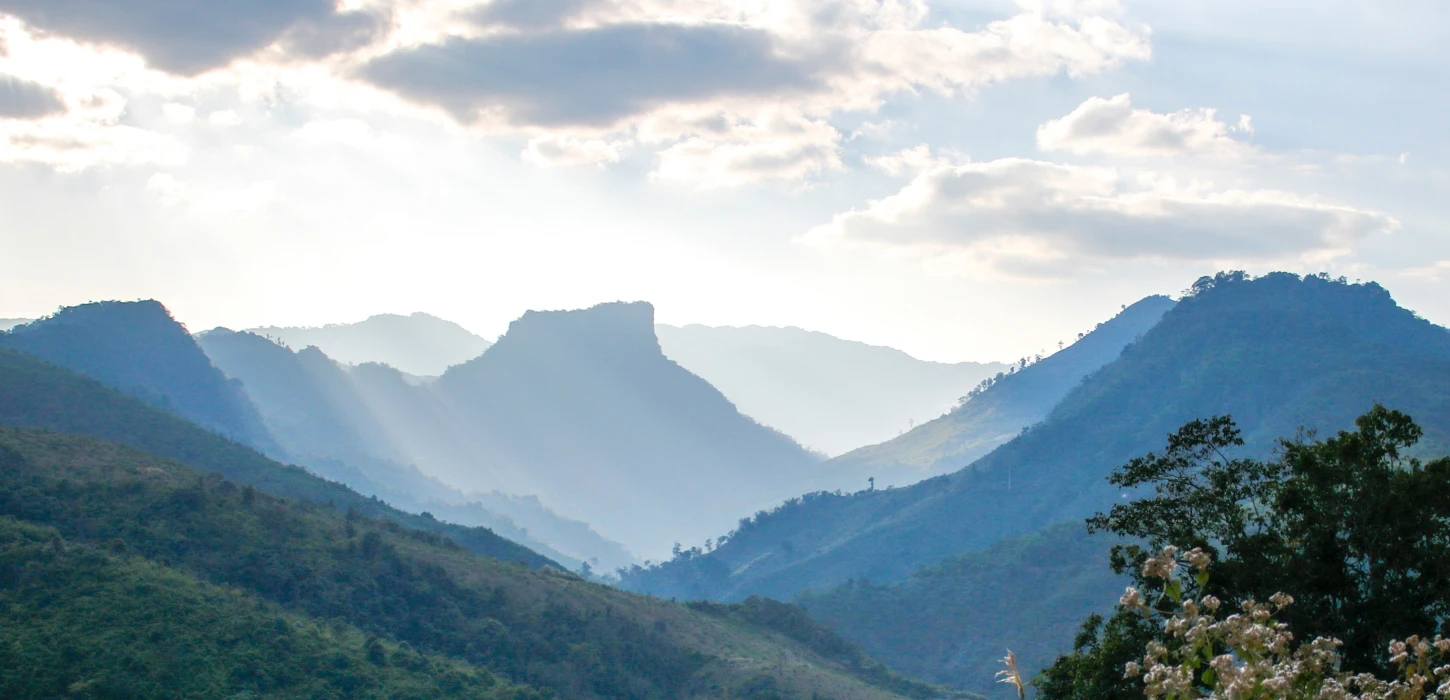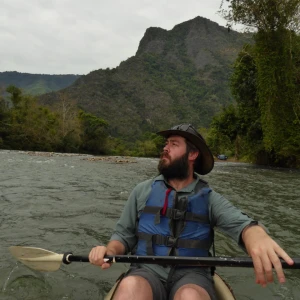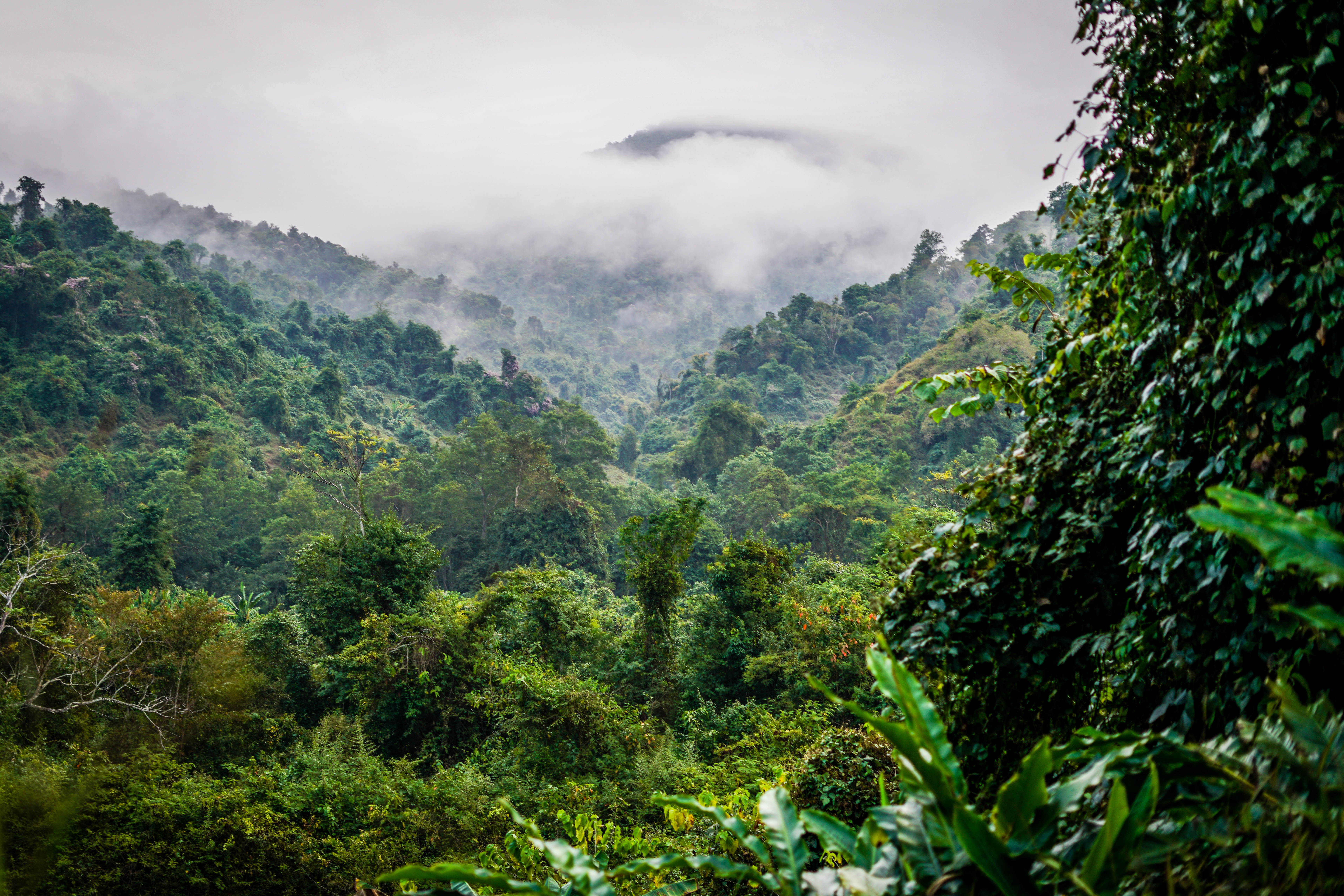
Nestled in a remote area of northern Laos, lies the Nam Et-Phou Louey National Park (NEPL NP). It is the first and largest national park in Laos and is recognised for its vast habitat which is home to a number of endangered and threatened species. The NGO Wildlife Conservation Society (WCS) provide technical support to the National Park in biodiversity monitoring and research, law enforcement, and conservation linked livelihood development as wildlife eco-tourism.
For most people the only way to get into the heart of the national park is with one of the National Park’s innovative ecotourism products. The Nam Nern Night Safari is the flagship eco-tourism product for NEPL NP and is a leader in conservation driven ecotourism, having won the best eco-tourism product in the world at the World Responsible Tourism Awards in 2013 and 2014. It has proven a great success for wildlife conservation and serves as a model to be replicated in Laos.
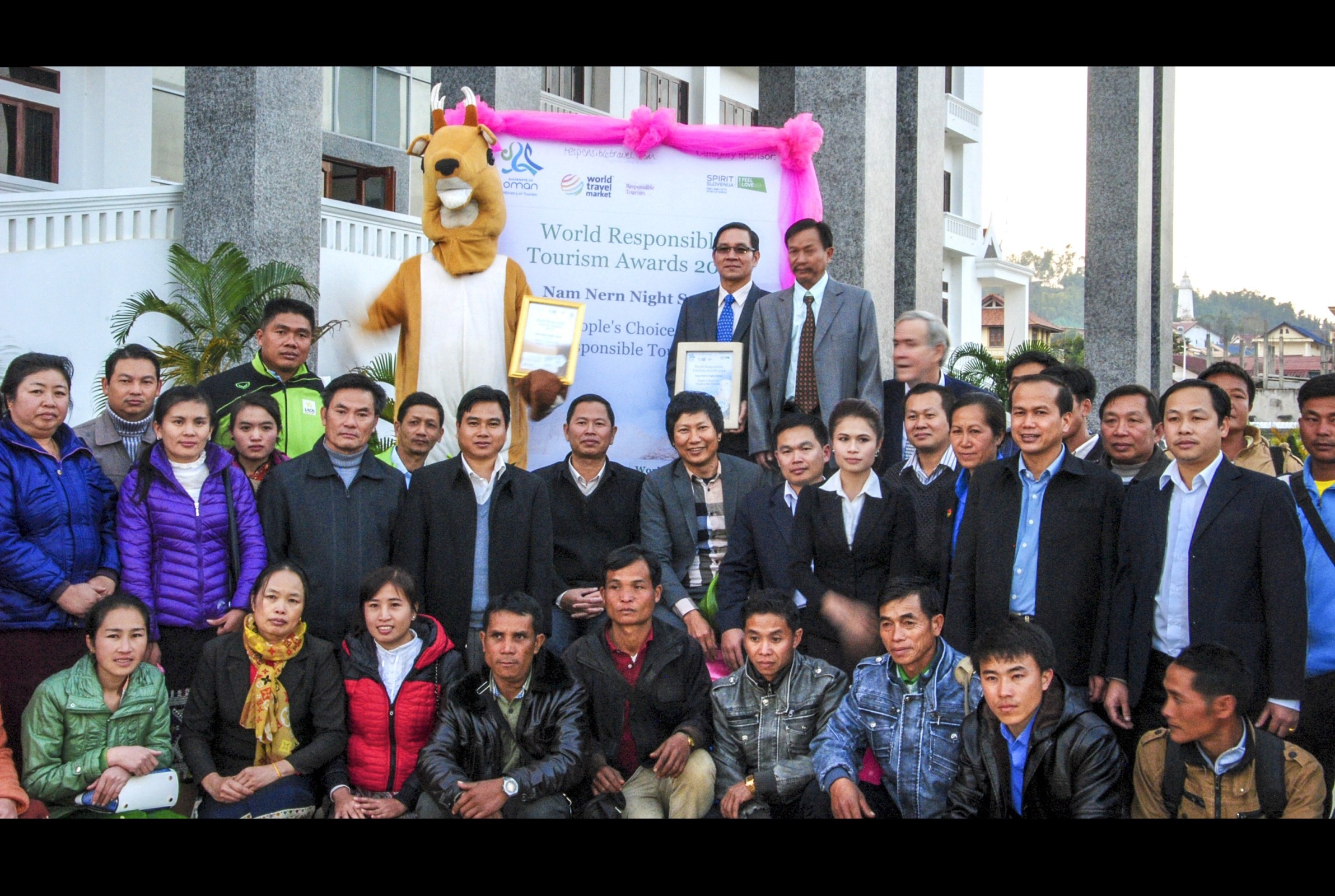
A first for Laos, this innovative tour allows visitors to make their way into the heart of the Nam Et-Phou Louey National Park and put themselves on the front line of wildlife conservation.
I was lucky enough to experience this tour first hand in October of 2020. While the world was still reeling from the effects of the COVID-19 pandemic, Laos was a tranquil paradise. The lack of international visitors had been a significant blow to the tourism industry, and the normally bustling hotspots of Vang Vieng and Luang Prabang were a shadow of their former selves. The one upside of this was that many of the popular tourist attractions were empty, allowing domestic travellers to soak up the peaceful tranquillity that had made places like Kwuang Si Waterfall and the Blue Lagoons so popular.
In the end of September, I flew from Vientiane to Xieng Khouang with Lao Airlines. I began with a visit to Lao’s latest UNESCO World Heritage Site, the Plain of Jars, then I visited hot springs in Muang Kham, before arriving to the Nam Et-Phou Louey National Park. The journey from Phonsavanh to Ban Son Khoua, the Nam Nern Night Safari starting point in Houaphan Province takes around 4 hours and offers some breathtaking scenery along mountainous roads.

The following morning, I have a hearty breakfast of khao piak (noodle soup) before leaving on the short drive to the small village of Son Koua. I am greeted by the Mr Somli, the National Park’s English-speaking guide. He’s from park’s guardian village and after accomplishing his studies in Luang Prabang returned to his home town. He has been working now with the NEPL NP’s tourism department for 2 years now and is a wealth of knowledge and an incredible guide. Before we leave on the boat he shows me around the small village and explains history and culture, weaving intricate patterns on their looms. There are no men in the village as they are all out working in the fields, having begun their day long before I arrived.
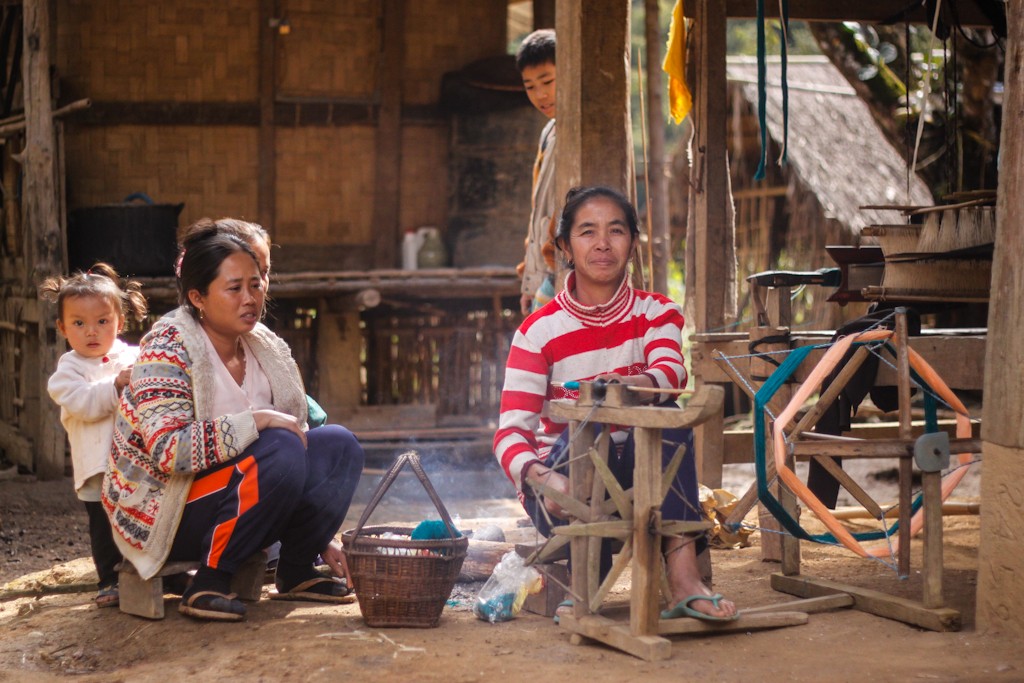
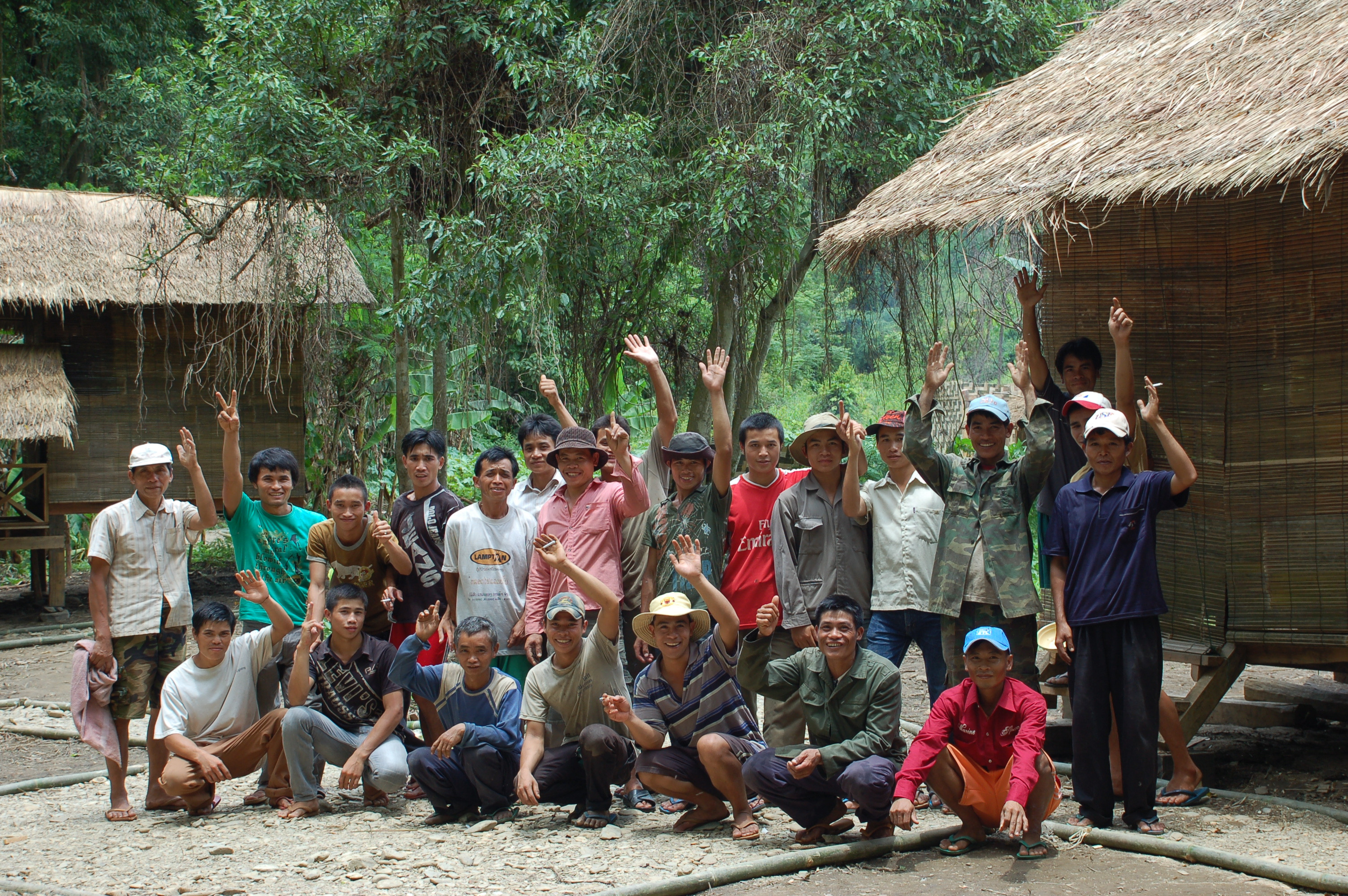
The people in this village are a mix of two ethnic groups Khmu and Lao. It is a small village with only around 178 households living mostly in wooden buildings. Somli tells me that the night safari has been a great boon for the village, providing an alternative source of income for more than 50 households.
After the short village tour I received a handmade scarf as a memento of my trip. It is given to me by the handicraft team woman who made it, and she beams with pride as I thank her. I carefully place the scarf in the dry bag provided to me by Somli, as well as a few other items. Shortly we are walking towards the boat that will take us upriver, into the heart of the National Park. We are soon underway with Somli and two local boatmen.

One mans the engine, while one stands on the bow of the boat, using a long bamboo pole to push us through the rapids. They have been working on this river since they were children and navigate the rapids with the expertise that only comes with familiarity. I’m astounded at their ability to pick lines up the rapids, silently working in tandem as they push our wooden boat up the river. Before long we leave the agricultural area behind and are passing through what Somli tells me is the ‘Totally Protected Zone’ where the only people allowed in this section of the park are the park rangers, monitoring staff and authorised ecotourism activities. On calmer sections of river, the motor dies down and we can drift almost silently as I scan the trees for birds. Somli hands me a bird identification sheet and it’s not long before I’m ticking off all sorts of birds, both large and small. A large eagle circles overhead, while a small kingfisher flitters along from tree to tree ahead of the boat. The boat trip seems to fly by as I’m too engrossed in spotting birds to notice our progress.

The boat pulls up to the river bank at a small gap in the forest. There is an indistinct path leading out into the jungle. A short walk down the path and the jungle opens on a clearing at the night safari camp. There are a few wooden buildings in the clearing as well as some benches and a tap with running water for washing. Somli tells me about the history of of the camp, the park and the night safari. He also tells me more about the animals in the park and the conservation work. I’ve been on a lot of tours in Laos, and no guide has impressed me with the depth of their knowledge as much as Somli.
Lunch soon appears and Somli entreats me to sit back, relax, enjoy my meal, and enjoy the peace and quiet of the jungle. Lunch is a huge serving of delicious food, with sticky rice, barbequed pork, stir fried vegetables, jeow, and bananas.
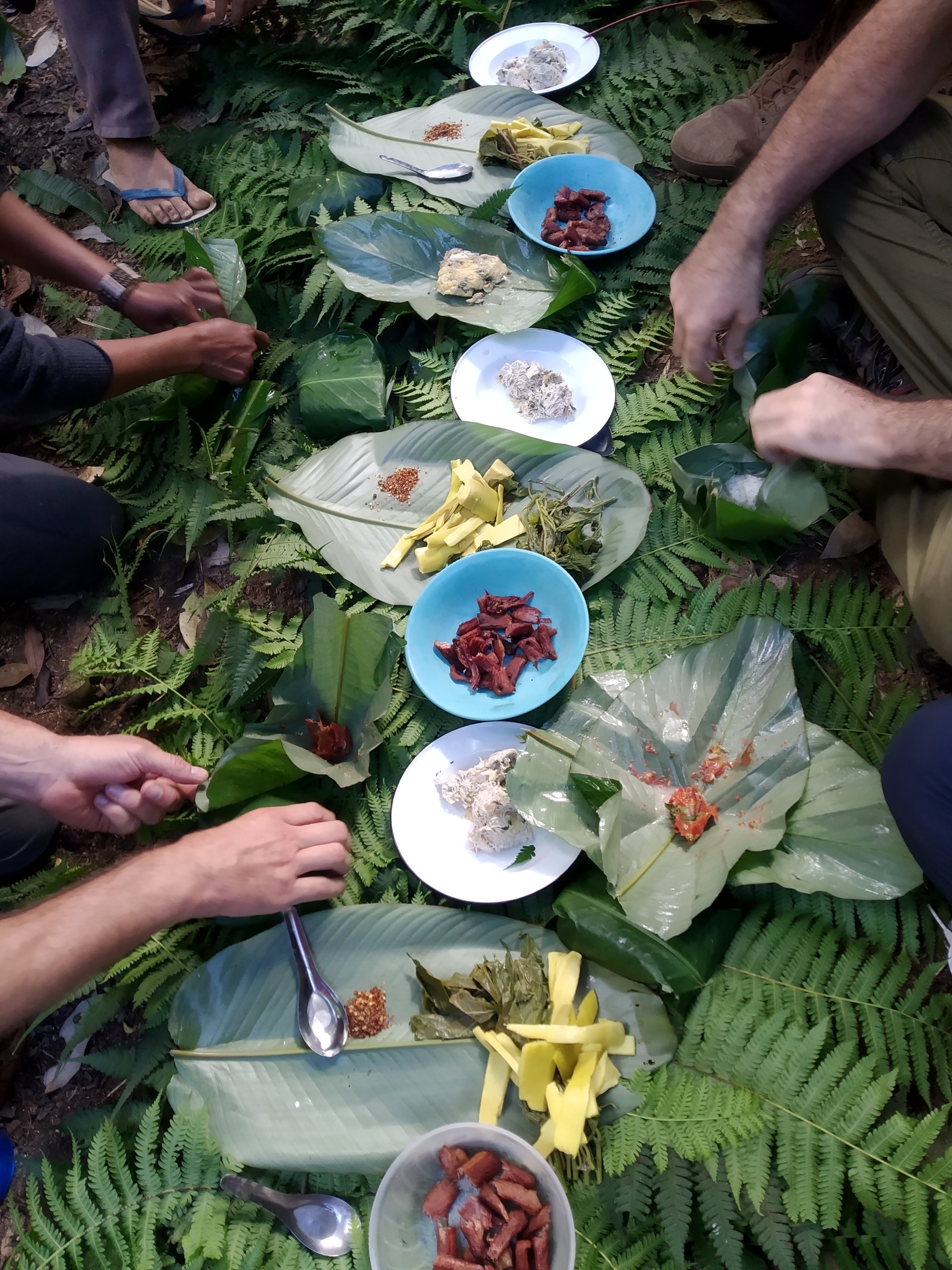
After lunch Somli shows me to my cabin, a short walk down a jungle path. It’s much grander than I expected to find, this deep in the jungle. Each cabin has a balcony, with chairs and a table looking out over the river or into the jungle. Inside the cabin are two comfortable beds with warm blankets and mosquito nets. The sheets and blanket covers are made with the same hand-woven cotton as my scarf, in tasteful subdued colours, by the village handicraft group ladies. I’m lucky enough to be given the “Otter Room”, with views over the river. Somli leaves me to relax, pointing out a small island in the river before he leaves. If I’m very lucky I might spot some deer coming down to munch on the tender shoots growing on the island. I can spot the deer path opposite side of the river.
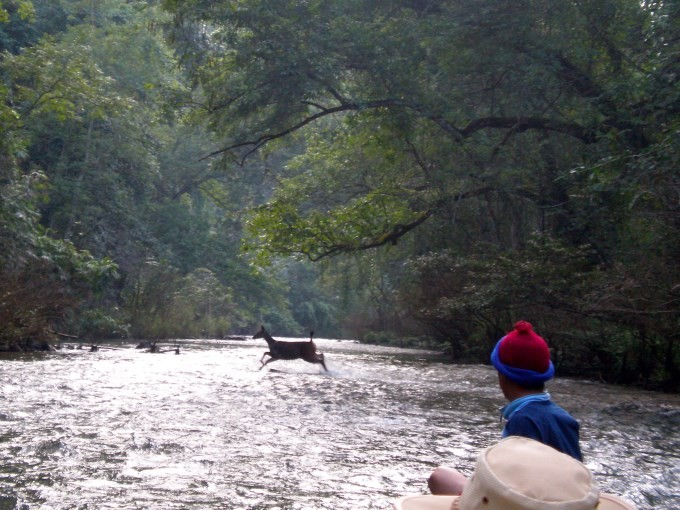
If I wanted to I could swim in the river, with a short flight of stairs leading down to the water. Or I could shower in the open-air showers, with water heated by the sun. I’m content to read my book and relax on my balcony, letting the peace and quiet of the jungle lull me into the calm of being in nature. Considering how far we are from any form of civilisation the facilities are very impressive.
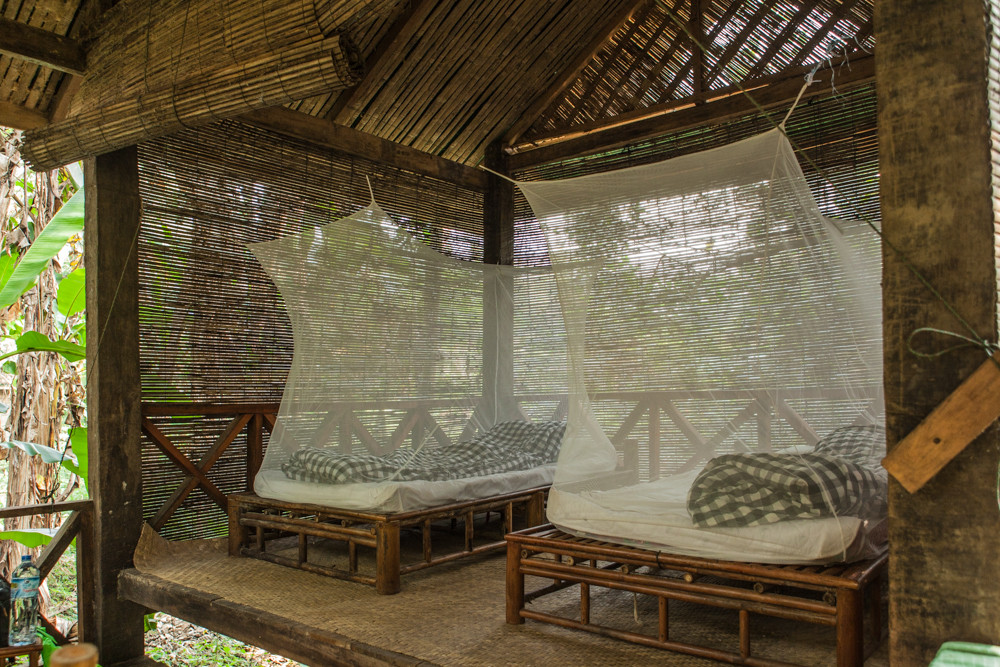
Something moves in the bushes across the river and instantly I’ve got my binoculars up. I’m so busy scanning the river bank looking for otters that I don’t hear Somli arrive behind me. It’s time for the next part of the adventure. He leads me on a short walk around the camp, pointing out the remains of the village that used to be here before the villagers were moved to the town where we started our adventure. The walk is only about a kilometre but it takes a long time as Somli together with the village guide stop at almost every plant to tell me its name and what it can be used for. This one is a medicine for headaches, this one goes good in soup, this one is good for new mothers. The guide’s knowledge is extensive and presses home the importance of a healthy ecosystem for the Lao people who rely on the non-timber forest products for so much of their lives. This is so much more than a job for Somli, he really believes in the importance of the conservation of the forest ecosystem.


Our short walk comes to an end at a ranger station and I’m introduced to members of the law enforcement team. Somli presents the ranger work. A young soldier, embedded with the rangers, wants to take a picture with me as I assume I am the tallest man he’s ever seen. He stands next to me, barely coming up to my chest, and the rangers all laugh as my 6’4” frame towers over him.
In the meantime, our erstwhile boatmen have brought our vessel up river to meet us. They greet us with smiles and help us into the boat. Once we are settled the boat takes off further upstream, deeper into the heart of the jungle. Their expertise is again on display as they calmly navigate the rapids. Just before sunset we arrive at a small beach at the confluence of two rivers. The boatmen lead into action, preparing a fire and cutting vegetables.
I relax on the bank, watching the sun set behind the mountains. The darkness quickly envelops the jungle and it's clear how far we are from civilization. There is no moon tonight and with no light pollution the first stars offer the only light amongst the inky dark. The jungle is quiet, apart from the quiet lapping of the river, the sound of slicing vegetables, and the crackling of the fire. It is a pristine moment, the perfect antidote to the constant drone of city noises. I realise how much I’ve missed this silence.
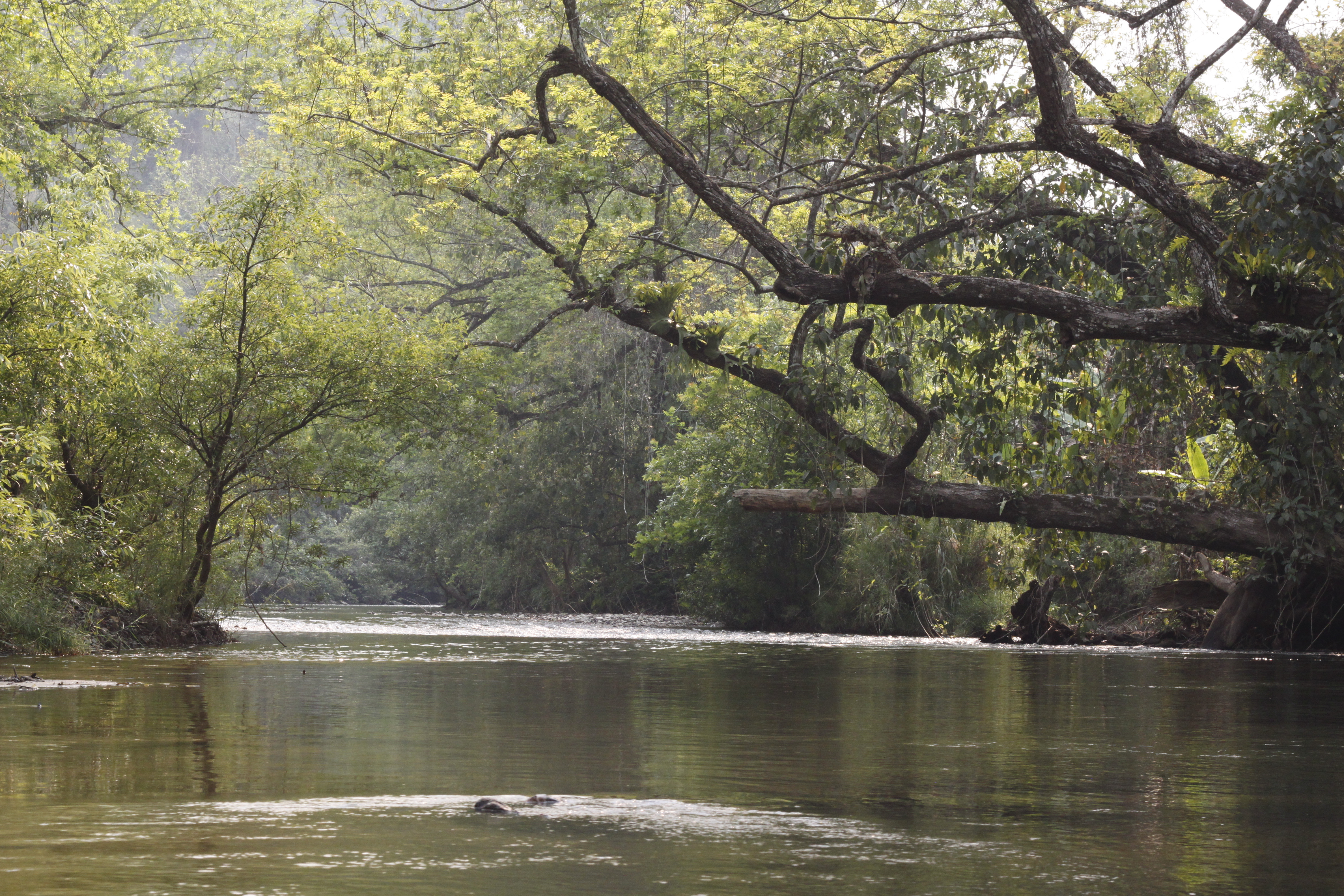
Dinner is served in a small gazebo on the river bank. There is another feast laid out on the table and I happily tuck in. Somli and the boatmen share the meal with me, the comradery of a shared meal making up for my poor Lao language skills. Somli helps with translating and the boatmen tell me about their lives. One of the best parts of the Night Safari program is that it takes local villagers who have previously been poachers and retrains them to be part of the ecotourism world. Their experience in spotting animals will soon prove invaluable. We share stories about our families and work, finding common ground in our shared love of spending time on the river. .
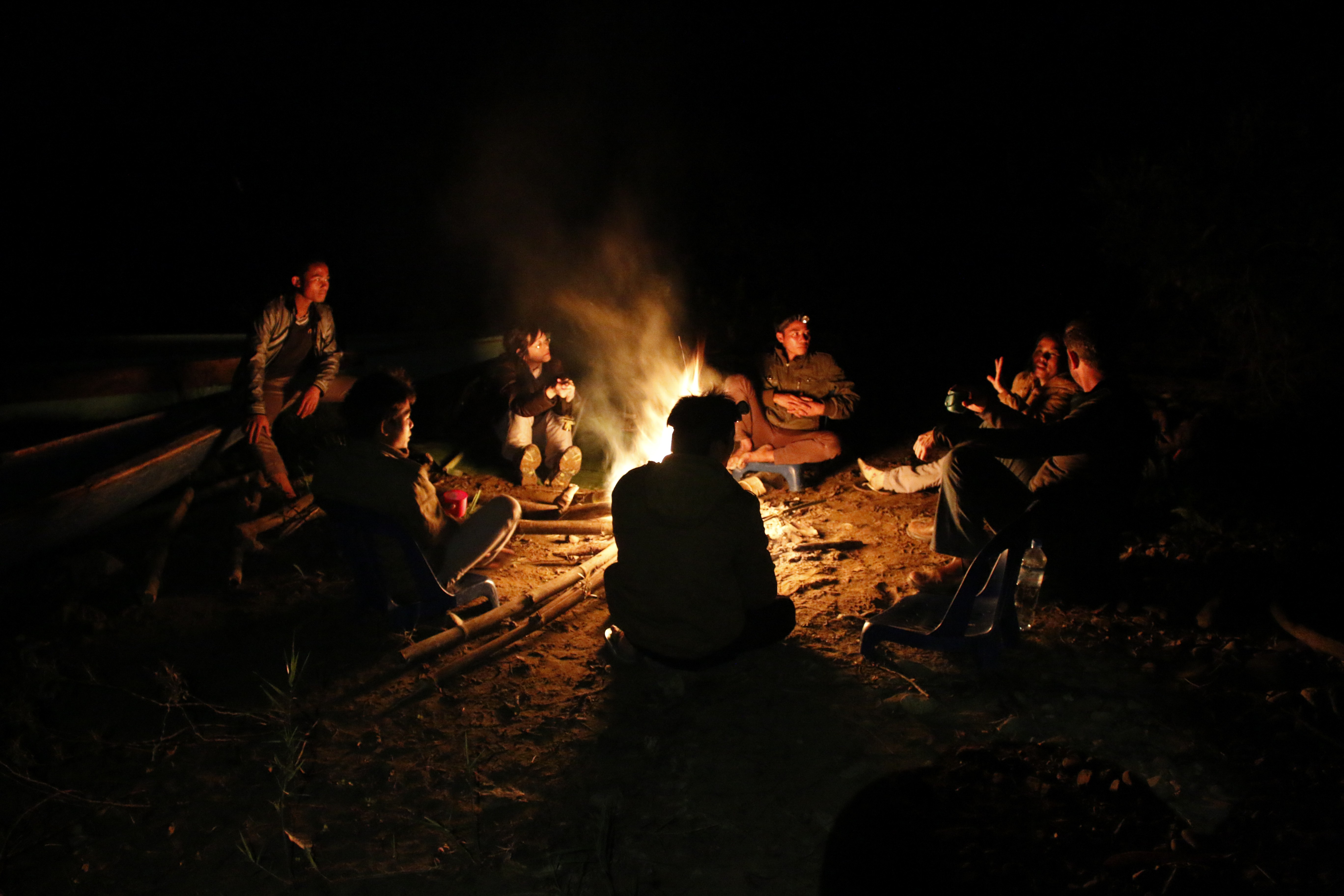
It's soon time for the main attraction. The boat men load up the boat with their cooking gear while Somli gives me a safety briefing and explains how the boat men will signal when it’s time to turn on my head torch to spot wildlife.
With the boat ready for our departure we settle in and begin floating downstream. The engine has been turned off and we float through the darkness in silence. We soon reach a rapid and I’m further impressed by the skills of our boatmen to navigate these rapids in almost complete darkness and silence. Safely through the rapid, we float calmly down the river, the lead boatman starts looking for animals.
He sweeps his torch across the jungle, looking for the tell-tale sign of eyes reflecting back at him, listening for the rustling of leaves. The small circle of light zig zags back and forth across the pitch-black jungle. His old hunting skills on display, he diligently searches for a glimpse of his prey.
Soon we spot our first animal. The eyes of a samba deer light up in the spotlight of the boatman and he signals us to turn on our own lights. The deer stares back at us from the grassy bank, before darting off into the bushes. We quickly spot another animal, this time a muntjac who appears startled by our appearance this deep in the jungle. Then in rapid succession we see more groups of deer, grazing on the grassy slopes above the river. Shortly we spot a civet climbing a tree extending out over the river. We coast silently underneath it as it stares back at us with what I imagine to be a sense of wonder.
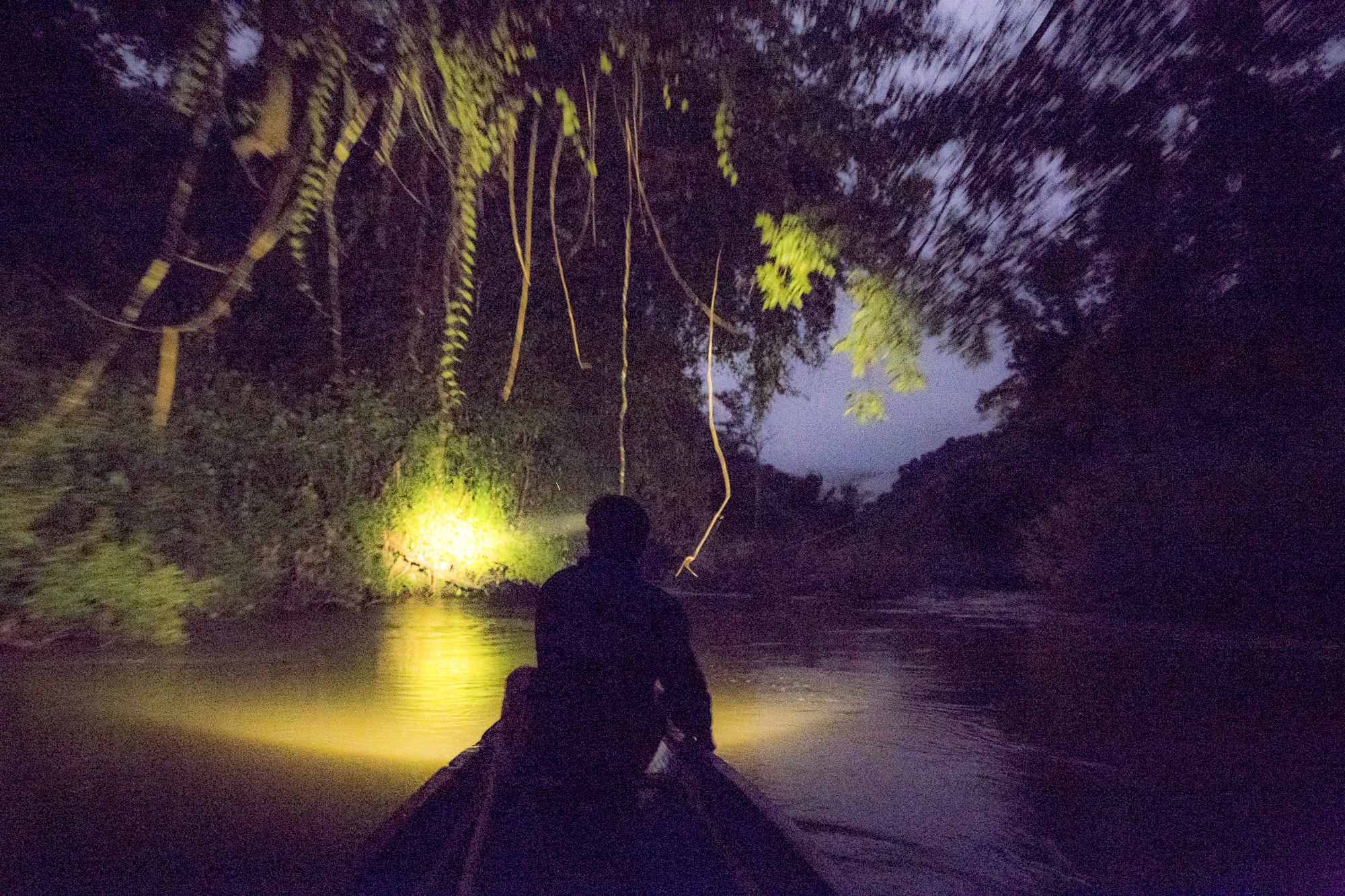
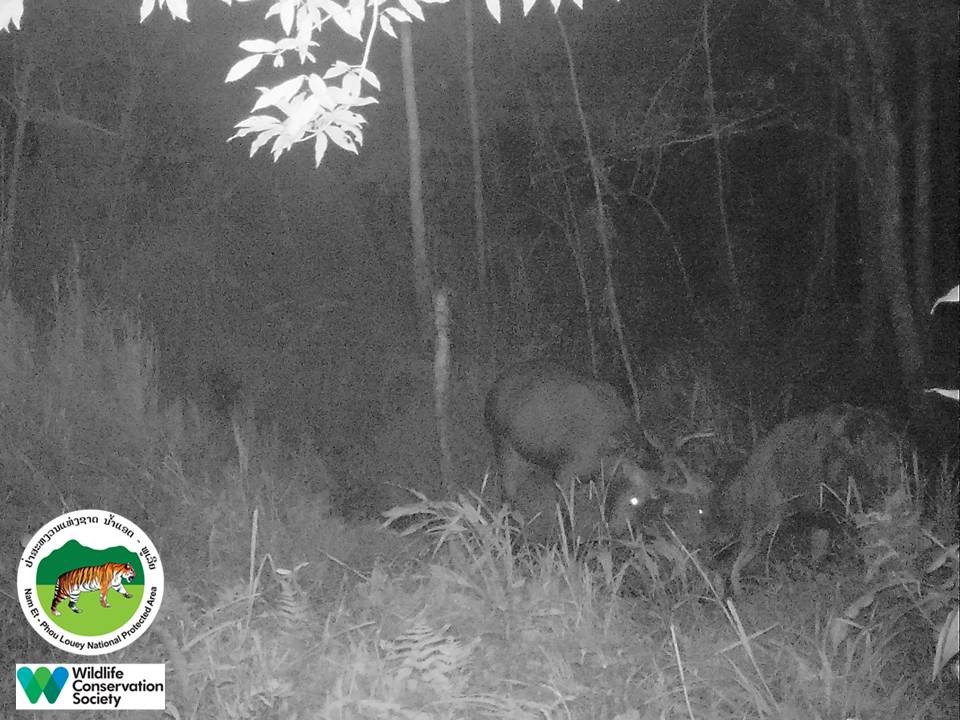
The boat glides silently along the river, but I am too engrossed by the jungle to notice. Hypnotised by the sweeping spotlight, I am lulled into tranquil calm broken by the infectious excitement of spotting another animal. The trip continues like this for an unmeasurable time (around 2 hours), the dark jungle offering no clues of our passage to my untrained eye. But to the experienced senses of our boatmen, we are nearing the end. I am jolted out of my repose as the boat softly beaches itself on the bank. We have returned to the camp. I make my way back to my bungalow and turn in for the night, the sound of the river lulling me to sleep.

In the morning I rise early to pack my belongings and make my way to breakfast. I am served another traditional meal, as delicious as it is huge. Once breakfast is done, we are ready to depart. We climb aboard our trusty boat and begin making our way back downstream. With the engine running and the current behind us this is a much faster trip than our journey into the park. Without the need to push the boat up through rapids we are able to make great time and soon leave the protected area and are weaving our way between hills covered with upland rice fields, soon giving way to grazing pastures dotted with cows.
We round a bend and the town’s bridge comes into sight. We arrive back where we started and climb up the short hill to the road. Under the watchful eye of the boatmen, I fill out a short survey indicating which animals I saw and in what numbers. Their bonuses rely on the accuracy of my memory, but luckily the ever-helpful Somli is on hand to help my recollection. The final tally is recorded and payments are made. These records will then go to the NEPL NP office and helps them document the success of the program and demonstrate its effectiveness. I’m thrilled to be part of the conservation effort, in my own small way.
Eventually it’s time to leave. I say my goodbyes to the friendly staff and start making my way off to the next destination. I leave filled with a sense of gratitude and accomplishment; it has certainly not been my most difficult trip by any means, but it has been one of my most enjoyable and most rewarding.
Take the opportunity to Discover Laos Today and book this incredible experience here!

